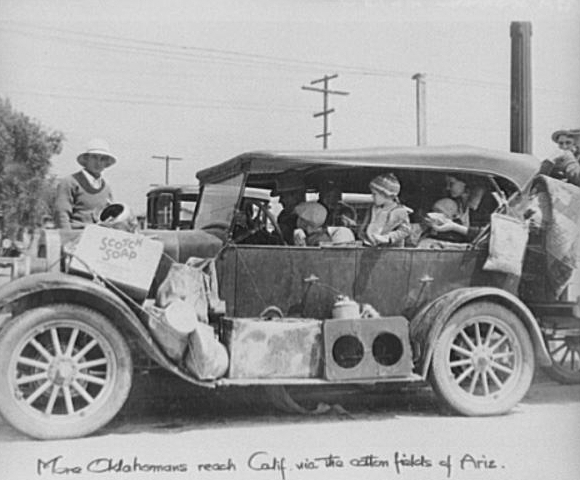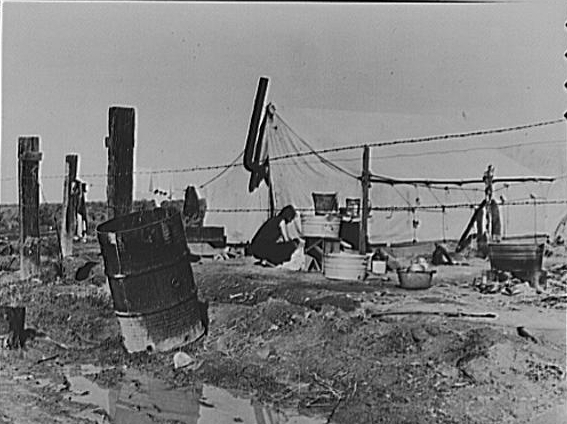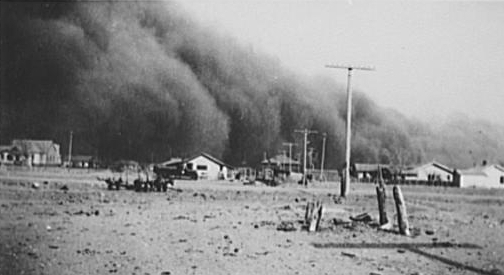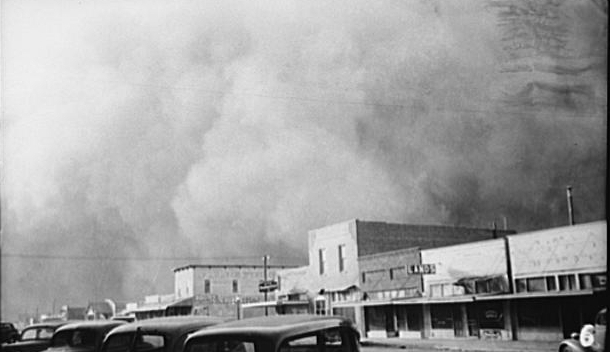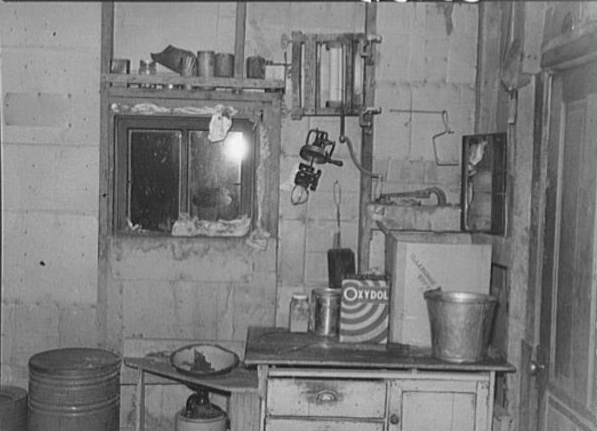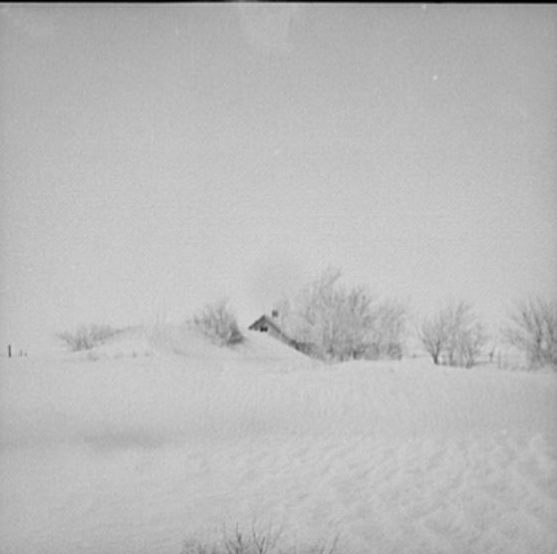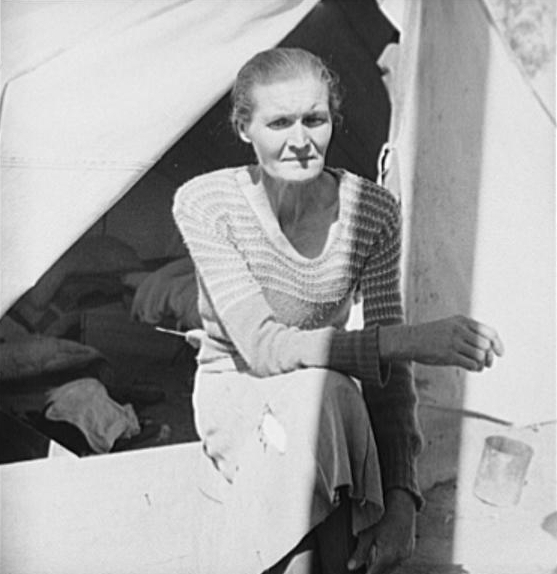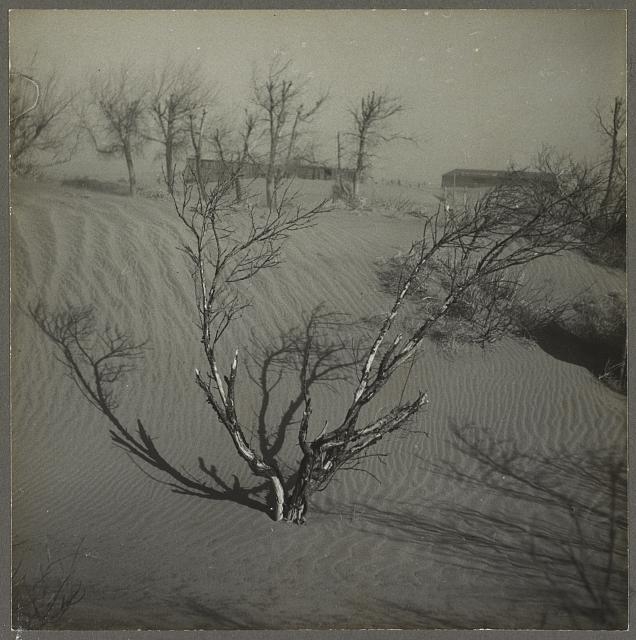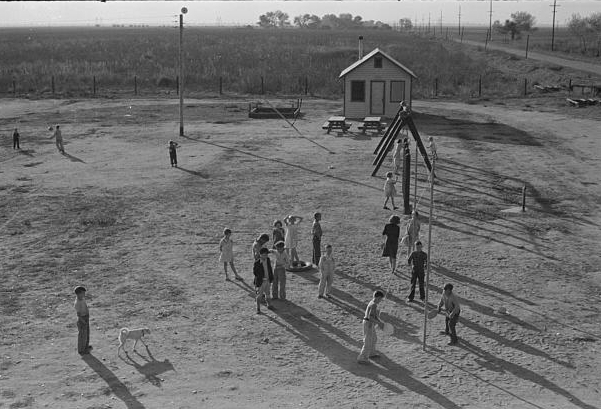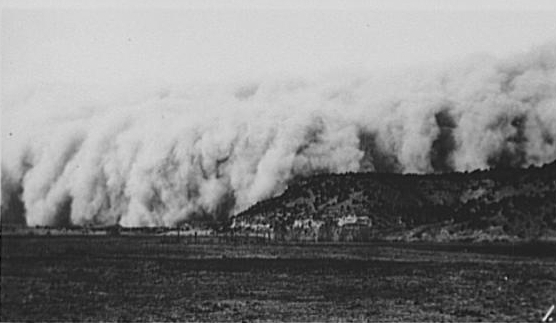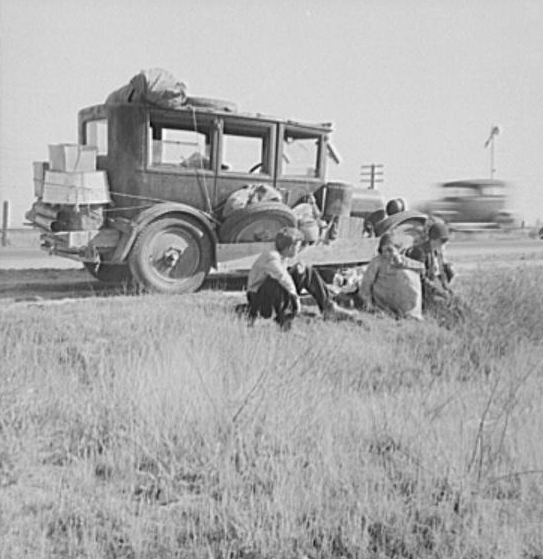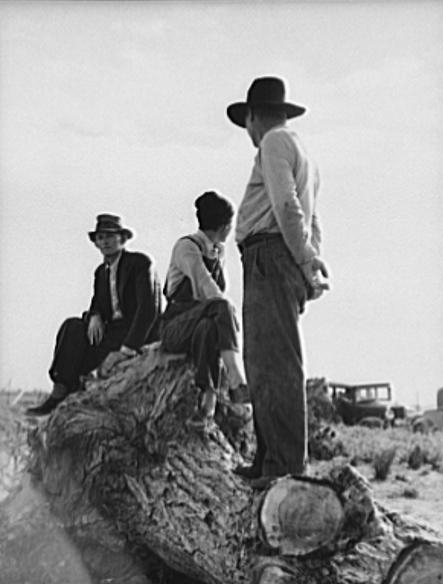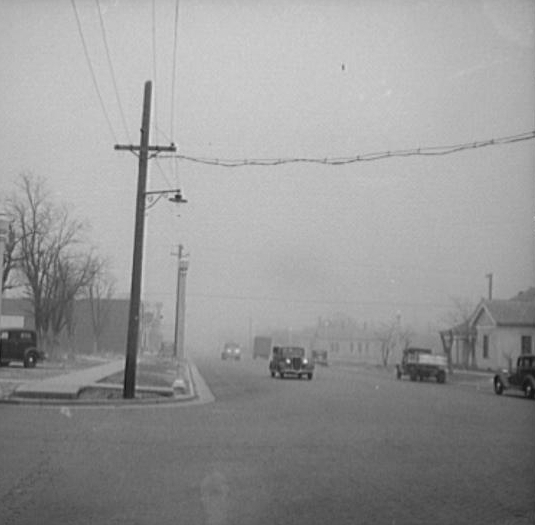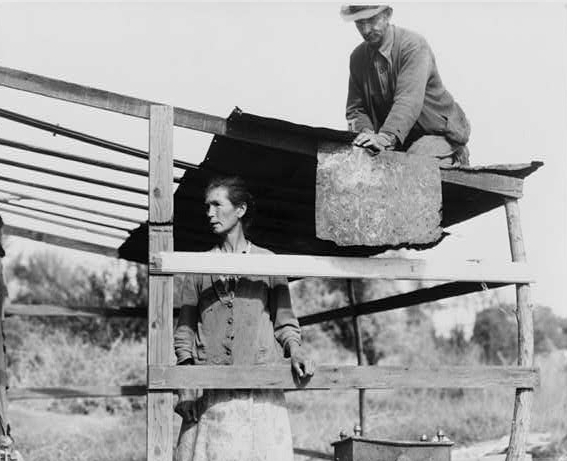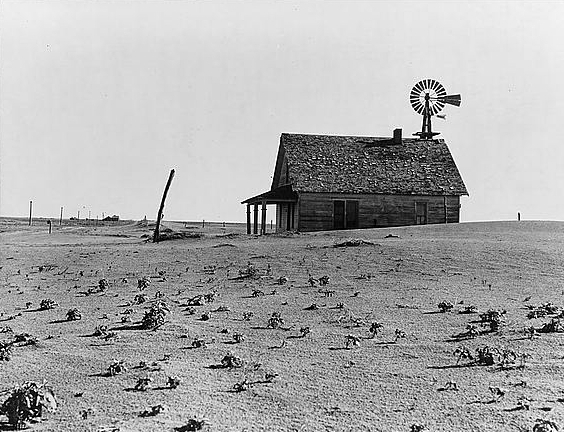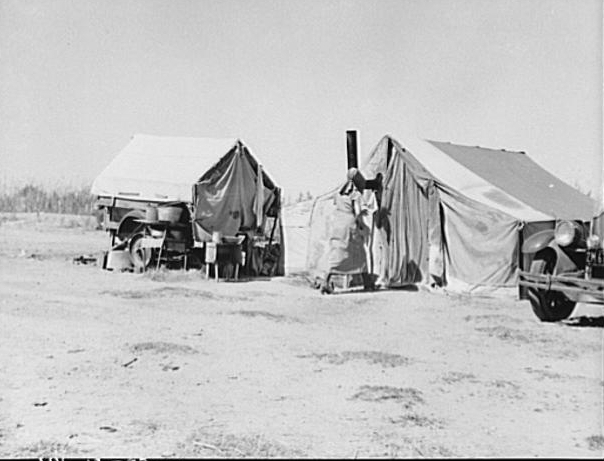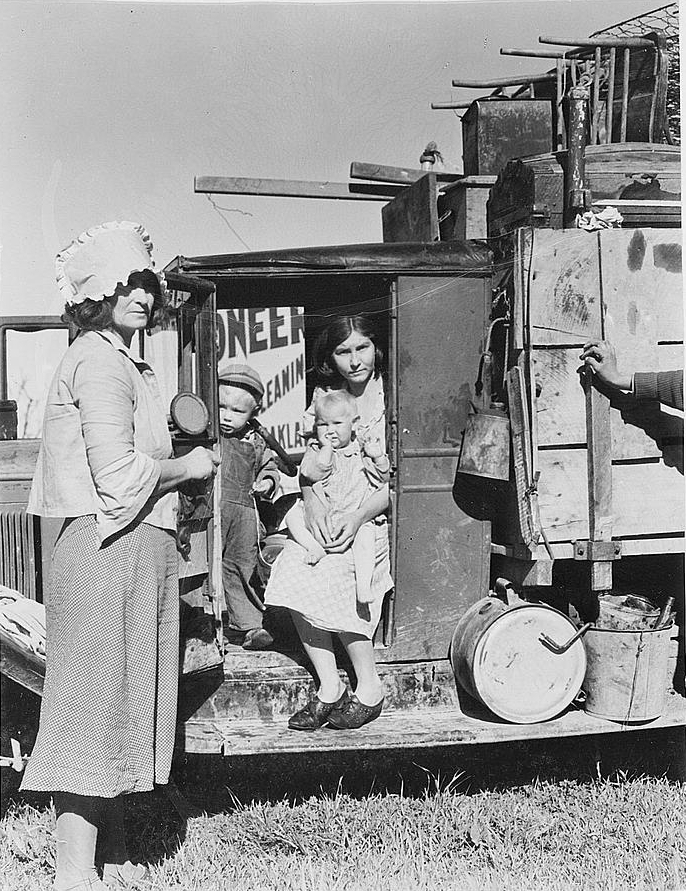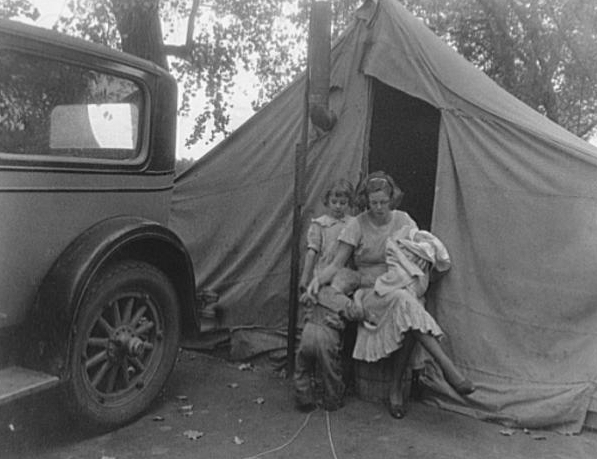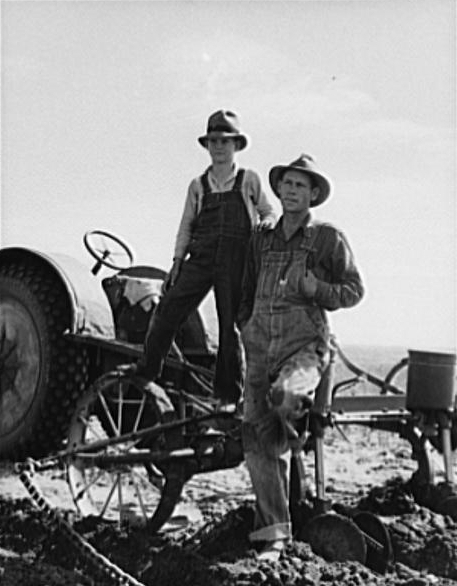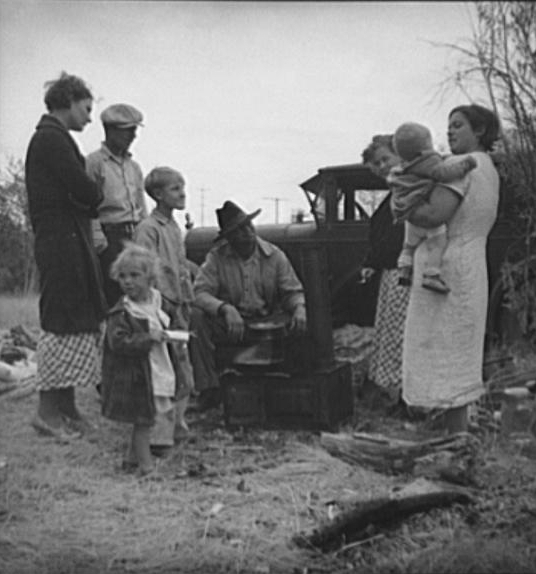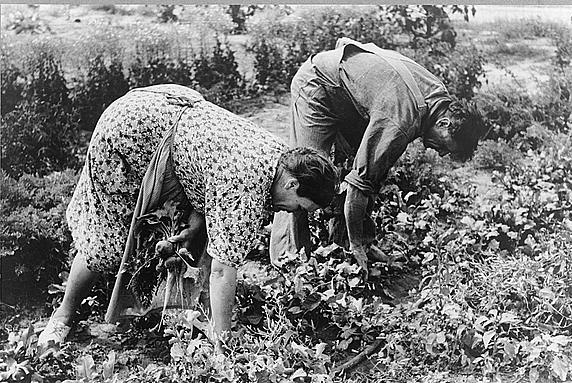
California or Bust!
 AncientFaces
AncientFaces This Oklahoma family left their home and (with everything they had) moved to California.
Home Sweet Home
 AncientFaces
AncientFaces Refugees from the Oklahoma Dust Bowl make a home in a California dump. Not so sweet.
Could you do this?
 Kathy Pinna
Kathy Pinna This isn't camping - it's daily life. Refugees washing up in a California ditch.
Rollin' on in, again
 AncientFaces
AncientFaces A dust storm rolling over a Colorado town in 1936
Duck and cover!
 AncientFaces
AncientFaces Elkhard KS under siege from a dust storm.
Towels to prevent dust
 AncientFaces
AncientFaces This North Dakota family tried to keep the dust out of their kitchen by stuffing towels around the windows. It didn't work well.
That isn't snow!
 AncientFaces
AncientFaces This may look like snow but it's the aftermath of a dust storm in Oklahoma.
No liquor in Oregon!
 AncientFaces
AncientFaces This park in Oregon didn't want Dust Bowl refugees drinking.
Torn but clean
 AncientFaces
AncientFaces Her clothes may be torn but this woman kept clean - no mean feat, given the conditions.
Lookin' pretty good!
 AncientFaces
AncientFaces This mother and daughter look pretty good, given the conditions. It must have been very difficult to stay groomed and looking nice!
Help, I can't breathe
 AncientFaces
AncientFaces An Oklahoma orchard after a dust storm - no, again, that ain't snow!
Tether ball, swings, and picnic tables . . .
 AncientFaces
AncientFaces This is a playground for "refugee children". Not a playground your children or grandchildren would use!
Ditch bank kitchen
 Kathy Pinna
Kathy Pinna This is a very clean, very organized kitchen in a ditch bank camp for refugees. Our admiration grows!
Awesome!
 AncientFaces
AncientFaces I'd be running - but it probably wouldn't help. Terrifying storm rolling into Colorado in 1935.
Single Mom by the side of the road
 AncientFaces
AncientFaces An Oklahoma mother and her three children fleeing to California.
Migrant workers
 AncientFaces
AncientFaces Men flocked to work in the California fields.
This is the middle of the day!
 AncientFaces
AncientFaces Drivers had to turn on their headlights to see in a storm in 1936 Texas.
Working hard
 AncientFaces
AncientFaces This Arkansas couple are resettling in a dump outside of Bakersfield CA.
There are people living here!
 AncientFaces
AncientFaces This is a Texas farm in the middle of the Dust Bowl. Many of their neighbors moved, but this family stayed on.
Home?
 AncientFaces
AncientFaces This is a 1937 refugee home in California. Perhaps that Texas farm was better!
Pea pickers in San Jose
 Kathy Pinna
Kathy Pinna Oklahoma refugees looking for work picking peas in San Jose CA.
"Squatter Camp"
 AncientFaces
AncientFaces Not even called refugees, they're called squatters. Mother holding a baby with two young ones.
Bosque Farms child
 AncientFaces
AncientFaces The Bosque Farms project was an agricultural resettlement project created by the federal government for Dust Bowl refugees.
Dust Bowl farmers
 AncientFaces
AncientFaces A father and son farming in New Mexico
On the road, again
 AncientFaces
AncientFaces Refugees along the road near Bakersfield, CA.
Fixing the land
 AncientFaces
AncientFaces A lush beet garden in Kansas - following the new federal guidelines for farming. BTW: What is a tile garden?

